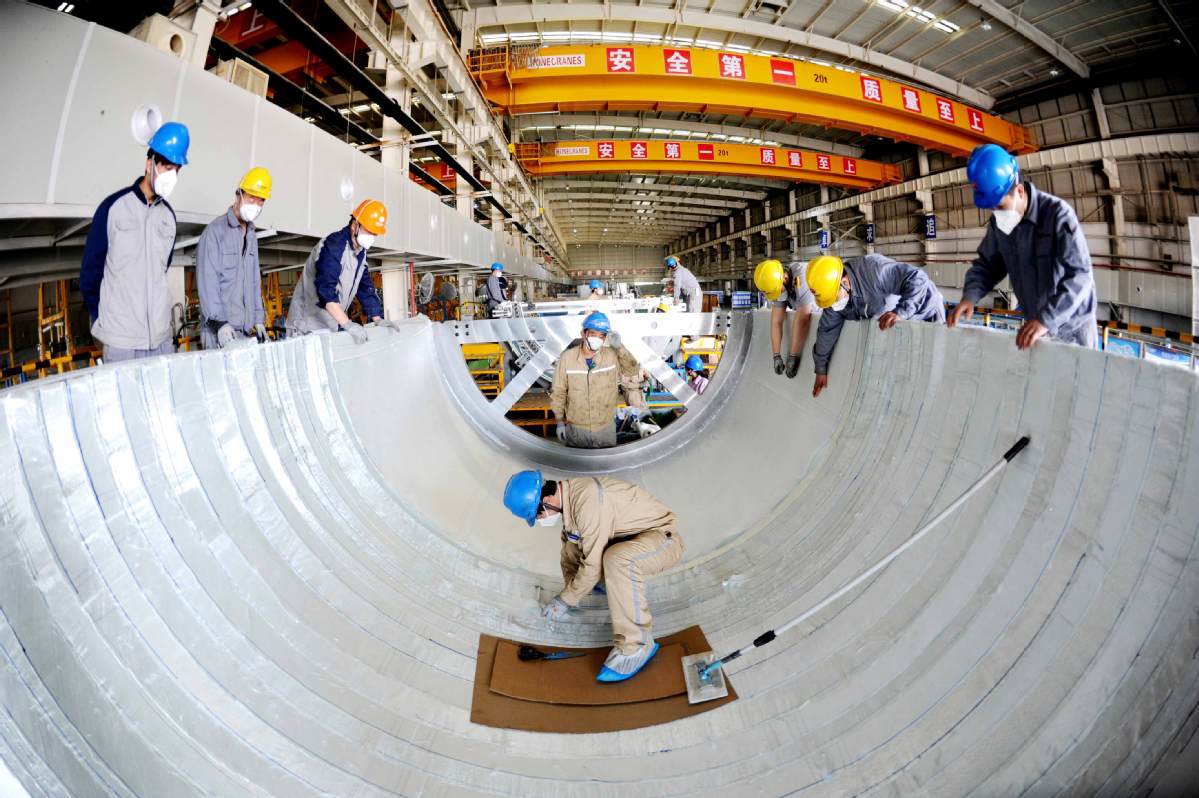Nation breezes toward cleaner future


Growth surge
China and the United States were responsible for 75 percent of new wind power installations globally last year.
The surge in growth was driven by the phasing out at the end of last year of an onshore wind feed-in tariff in China and a production tax credit in the US.
Companies rushed their installations before government subsidies and tax benefits ended for such projects.
For China, wind power has become an integral part of its green energy mix and a key element in the country's emissions goals.
In his virtual address to the UN General Assembly in September, President Xi Jinping announced that China would upgrade its nationally determined contributions, or NDCs, by targeting peak carbon dioxide emissions before 2030 with the aim of reaching carbon neutrality by 2060.
GWEC noted in its Global Wind Report 2021, which was released in March, that this pledge from the world's second-largest economy and a leading carbon-emitting nation formed one of the key global milestones to tackling climate change since the 2015 Paris Agreement.
It said China's net-zero target has since been followed by a series of ambitious commitments to "scale up wind and renewable energy capacity, with various ministries and provincial-level bodies now undertaking strategic measures for planning and implementation".
China aims to increase wind and solar generation to 26 percent of power production by 2030. This could translate to some 1,600 GW of wind and solar capacity - exceeding the target of 1,200 GW by 2030 set in December.
According to the NEA, as of the end of last year, China had 281.5 GW of wind power capacity and 253.4 GW of solar generation capacity.
GWEC said in its report that both wind and solar "will be central to China's power matrix".
"Most top wind farm developers in China are State-owned companies, many of which have recently published goals for emissions peaking and renewable capacity," the report said.
It quoted Qin Haiyan, secretary-general of the Chinese Wind Energy Association, as saying, "Although the COVID-19 pandemic impacted China's wind industry early in 2020, the Chinese government took prompt and strong measures to effectively contain the virus.
"This allowed the sector to resume 'business as usual' manufacturing and installation activities as early as March 2020, which was crucial for the sector to complete projects with the looming subsidy deadline."
To help smooth the way forward and play their part in helping achieve China's net-zero target, grid companies took various measures to overcome bottlenecks and connect as many projects as possible before the end of last year, Qin said.
More than 400 Chinese wind power companies signed a "Beijing Declaration" at the end of last year. They committed to installing more than 50 GW of new wind power capacity annually from this year to 2025, and more than 60 GW annually from 2026 onward to help the nation reach its 2060 carbon neutrality target.
Analysts said the surge in wind power capacity last year, even in the face of a global pandemic, clearly shows that this level of deployment is possible in China.
Li Xiaoyang, a senior consultant at Wood Mackenzie, a global energy and resources consultancy group, said wind power's importance in China's renewable energy mix cannot be underestimated.
She said wind power now accounts for 30 percent of the country's renewable energy capacity.
"With such significant achievement in the past decade, we expect wind power to play a more substantial role in the following decades," Li added.
According to Wood Mackenzie, more than 2,000 GW of new wind capacity is needed from last year to 2060 to support China's carbon-neutral target.
In its latest wind power outlook report released in March, the consultancy, which is based in the United Kingdom, expects 408 GW of new capacity to be added from this year to 2030, including 73 GW of offshore wind capacity.
Li said for China to achieve its 25 percent non-fossil fuel energy consumption target by 2030 would require a 40 percent renewable contribution to the power market. This would fuel wind capacity growth in the next decade.
Chinese wind turbine manufacturers have primarily remained in the domestic market, Li added. However, some Tier-1 original equipment manufacturers (OEMs) of turbines, including Goldwind, Envision and Mingyang, are attempting to enter overseas markets.























